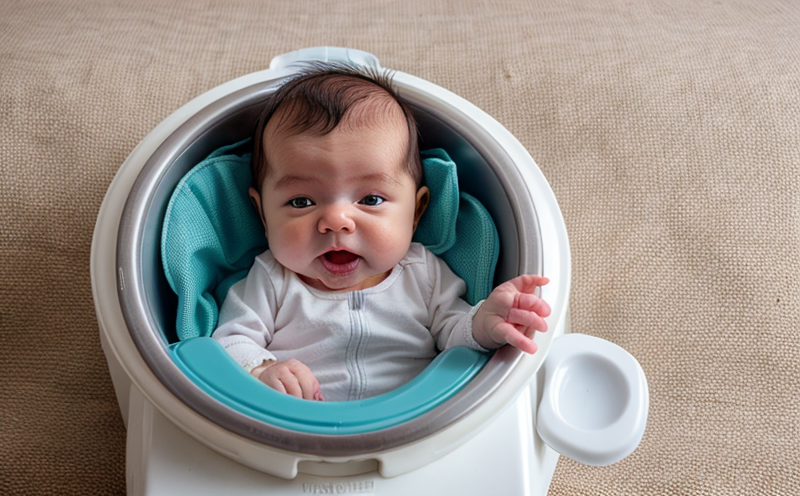ISO 35107 DON Residue Testing in Baby Foods
The presence of Deoxynivalenol (DON) in baby foods is a critical concern for food safety and quality. DON, also known as vomitoxin, is a mycotoxin produced by certain fungi that can contaminate grains used in infant formula and baby foods. This contamination not only poses health risks but also affects the shelf life and consumer trust.
ISO 35107 provides a robust method for DON residue testing specifically designed for this sector, ensuring compliance with international standards. The standard outlines precise procedures to accurately measure DON levels in infant formula and baby foods, which is crucial for maintaining product safety and quality.
This service ensures that the products you are providing meet regulatory requirements and industry best practices. By adhering to ISO 35107 guidelines, manufacturers can prevent the potential health hazards associated with DON consumption by infants. Our laboratory uses state-of-the-art equipment and follows rigorous protocols to deliver accurate test results.
The testing process begins with careful sample preparation, ensuring that all components of the baby food are properly analyzed for DON contamination. The analysis is conducted using high-performance liquid chromatography (HPLC) equipped with a UV detector, which is capable of detecting even trace amounts of DON in complex matrices such as infant formula and baby foods.
The results from this testing not only help ensure product safety but also provide valuable data for quality control and improvement. For regulatory compliance, the test can be used to demonstrate adherence to international standards like ISO 35107, which specifies the acceptable limits of DON in infant formula and baby foods.
The impact of this testing extends beyond just ensuring product safety; it also enhances brand reputation by demonstrating a commitment to child health and welfare. This is particularly important given the sensitive nature of products intended for infants who are more vulnerable to harmful contaminants. By leveraging our expertise, you can ensure that your infant formula and baby food products meet the highest standards of quality and safety.
Scope and Methodology
| Step | Action | Description |
|---|---|---|
| 1 | Sample Preparation | The sample is prepared by homogenizing the infant formula or baby food according to ISO 35107 guidelines. This ensures that all parts of the product are analyzed equally. |
| 2 | Analytical Procedure | The prepared sample is then injected into an HPLC system equipped with a UV detector for DON analysis. The chromatographic separation allows accurate identification and quantification of DON residues. |
| 3 | Data Interpretation | The data obtained from the HPLC is interpreted against the specified limits in ISO 35107 to determine compliance with international standards. |
| 4 | Reporting | A detailed report outlining the test results, including any deviations from acceptable limits, is provided. This ensures transparency and facilitates informed decision-making. |
Why Choose This Test
The ISO 35107 DON residue test in baby foods is essential for several reasons. Firstly, it ensures regulatory compliance by aligning with international standards designed specifically for this sector. Secondly, it provides critical data that can be used to improve product quality and safety. By detecting even trace amounts of DON, the test helps prevent potential health risks associated with infant consumption.
Moreover, adherence to ISO 35107 enhances brand reputation by demonstrating a commitment to child health and welfare. Consumers are increasingly aware of the importance of food safety and quality, especially when it comes to products intended for infants. By choosing this test, you not only meet legal requirements but also build trust with your customers.
The testing process is precise and reliable, using advanced analytical techniques that ensure accurate results every time. This level of accuracy is crucial in maintaining consistent product quality and ensuring that any deviations from acceptable limits are identified promptly. The use of ISO 35107 ensures that the test results are internationally recognized and widely accepted.
The benefits extend to your business as well. By demonstrating compliance with international standards, you can expand your market reach beyond national borders. This is particularly important in today’s globalized food industry where consumers expect products to meet consistent quality and safety standards worldwide.
Customer Impact and Satisfaction
The impact of ISO 35107 DON residue testing in baby foods is profound. For customers, it means peace of mind knowing that the products they are purchasing meet stringent safety standards. This can lead to increased customer satisfaction and loyalty as consumers trust that their purchases are safe for infants.
From a business perspective, adhering to these tests can enhance brand reputation and market competitiveness. It demonstrates your commitment to quality and safety, which is crucial in maintaining long-term relationships with customers. Additionally, it helps you stay ahead of regulatory changes and industry trends.
The test results also provide valuable insights that can be used to improve product formulations and manufacturing processes. This continuous improvement cycle ensures that products not only meet current standards but are also prepared for future challenges. By investing in this testing service, you are ensuring the long-term success of your business by maintaining a strong reputation and customer trust.





